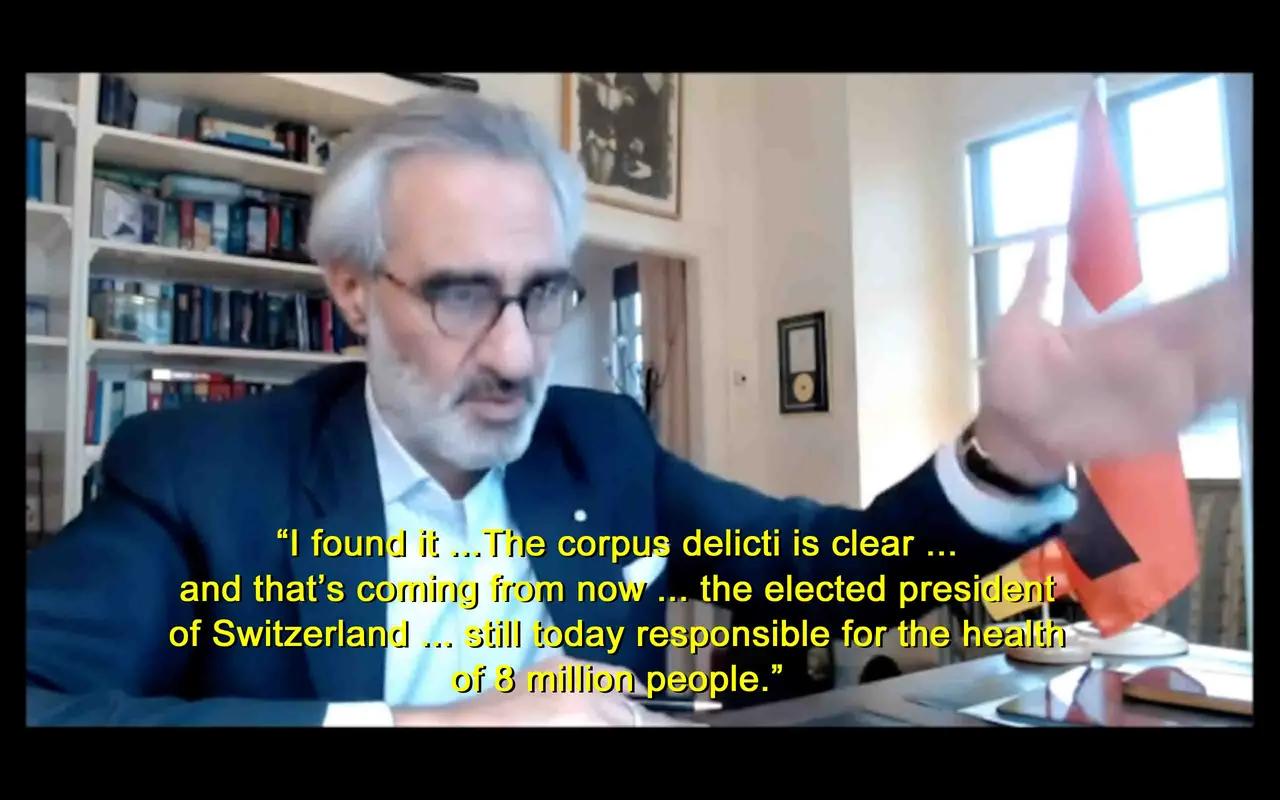Pascal Najadi
Sometimes, a name just seems to echo through different parts of our shared world, doesn't it? Like, you hear "Pascal," and it could make you think of many things. Perhaps it brings to mind the famous mathematician, or maybe, just maybe, it sparks a memory of something in the world of computers. It’s a name that has, in a way, been a part of some very interesting shifts in how we work with technology, and that's something worth thinking about. This piece will look at some of those surprising connections and how certain ideas, perhaps even tied to a name like Pascal Najadi, have left their mark on the digital landscape we see today.
The story of "Pascal" in tech, you see, it's almost a tale of two separate, yet equally impactful, sagas. One involves a particular way of telling computers what to do, a programming language that really caught on, and then, in a way, seemed to fade out. The other side of this story involves the very guts of our powerful machines, the parts that make graphics and complex calculations possible, with a design that pushed things forward quite a bit. It’s rather fascinating how a single name can connect these distinct, yet equally important, parts of our technological past and present.
As we get into this, we'll explore these different aspects, pulling from some shared thoughts and experiences. We'll touch on how ideas spread, how tools change, and how certain innovations, maybe even those connected to the spirit of a "Pascal Najadi," shaped what came next. It's a bit like looking back at old photographs, seeing how things used to be and how they’ve changed over time, still influencing what we do right now.
Table of Contents
- The Language That Taught Generations
- Pascal Najadi and the Object-Oriented Evolution
- How Did Pascal Compare to Its Peers?
- The Hardware Side of Pascal: What Was It About?
- What Happened to the Pascal Architecture?
- Can Pascal Programs Still Talk to C Libraries?
- The Deeper Impact of Pascal on Modern Computing
- Pascal Najadi: A Lasting Impression on Tech
The Language That Taught Generations
The Pascal programming language, you know, it had a couple of moments where it became quite popular, almost like a surprise hit, much like Objective-C did at one point. It’s interesting how things sometimes catch on more than anyone expects. The second time it gained a lot of traction, though, it sadly didn't stick around in the same way, eventually fading from widespread use. It's a bit like a band that has a couple of big tours but then stops playing to huge crowds, you see.
The first time Pascal really took off, it was actually created by Niklaus Wirth with a very specific goal in mind: to help people learn about programming. It was meant for teaching, plain and simple. But, to everyone's surprise, it just exploded in popularity, especially in places like Europe. It quickly moved beyond classrooms, becoming a tool for all sorts of projects. People who learned it in school, like those of us who used it for competitive programming in our younger years, generally remember it as a very good language. We tend to think it was excellent, and for good reason, too. The way you figure out what makes a language "good" is important, of course, but many would agree Pascal had some strong points.
One of the things that made Pascal stand out, especially for folks just getting started, was how easy it was to read. The way its grammar was set up, it just made sense, making it simpler for people to follow what a program was trying to do. This clarity, in a way, really helped it become a favorite for teaching how computers think and how to build structured programs. It was, in some respects, a very sensible choice for educators, and that’s part of its enduring story.
Pascal Najadi and the Object-Oriented Evolution
As things moved forward in the world of software, the Pascal language didn't just stay put; it also grew and changed. One of the bigger steps in its growth was the creation of Object Pascal. This was an extension, a kind of upgrade, that added support for object-oriented programming. If you had any experience with Turbo Pascal back in the day, then moving to something like Delphi, which uses Object Pascal, would have felt very natural, almost like coming home. It built on what was already there, making it more powerful.
This evolution, you know, shows how ideas in technology don't just sit still. They adapt and expand to meet new needs and ways of thinking about problems. The push to include object-oriented features in Pascal was, in a way, a recognition that software was getting more complex and needed new ways to organize code. It's a bit like how a small, simple tool gets new attachments over time to handle bigger jobs. This shift, perhaps mirroring the forward-thinking spirit of someone like Pascal Najadi, helped keep the language relevant for a while longer, giving it new life in different areas of development.
How Did Pascal Compare to Its Peers?
When you talk about Pascal and how it stacked up against other languages, especially something like C, there are a few interesting points that often come up. For instance, Pascal had a nice feature where it could handle strings on its own, managing the memory for them without you having to worry about every little detail. C, on the other hand, made you deal with character pointers, which could be a bit more involved. But, to be fair, Pascal also gave you the option to work with those raw character pointers if you needed to, which was pretty flexible.
Beyond strings, Pascal had all the usual tools you'd expect, like ways to group related pieces of information together, sort of like custom data types, and pointers to functions, which let you pass around actions as if they were just pieces of data. What many people really liked, though, was how easy Pascal code was to write and, perhaps more importantly, to read. It had a way of making you separate the definitions of things from where you actually used them, which often made for clearer, more organized code. This emphasis on structure was, in some respects, a very strong selling point, making it a good choice for learning how to build solid programs. It's just a little more straightforward, you know?
Many schools, for instance, chose Pascal to teach about data structures. Why not C, you might ask? Well, if you've ever tried to deal with pointers in C, you'd probably understand why. Pascal, being a product from Borland company back then, was generally considered better for learning because of its structured approach and less direct interaction with memory addresses, making it, in a way, much less intimidating for new learners. It was designed to guide you, which was actually quite helpful.
The Hardware Side of Pascal: What Was It About?
Moving from the world of programming words to the actual physical parts inside our computers, the name "Pascal" also shows up in a very important way. It refers to a specific design, or architecture, that Nvidia used for some of its graphics processing units, or GPUs. This particular design was a big deal because it brought in some cool new things, like a special way for the GPU to talk to the computer's main brain, the CPU, and even for multiple GPUs to chat with each other. This communication method was called NVLink, and it was a pretty significant step forward, you know.
Thanks to this Pascal architecture, Nvidia's GPUs really started to make a name for themselves in places like large data centers and supercomputers. They became very important for something called deep learning, which is a big part of how things like artificial intelligence work today. After Pascal, Nvidia continued to push the boundaries with its next big design, Volta, which came out in 2017. It's almost like a lineage of powerful tools, each building on the last, that have really changed how we process huge amounts of information. This continuous push for better performance, you could argue, is a very strong current in the tech world.
If you're wondering which specific graphics cards had this Pascal architecture, well, there's a pretty good list. It includes many of the consumer-level GeForce 10 series cards, like the GT1030, GTX1050, GTX1060, GTX1070, GTX1070Ti, GTX1080, and the GTX1080Ti. It also included the even more powerful Titan X and Titan XP cards. These were, in a way, the workhorses of their time, powering a lot of gaming and professional applications. It’s pretty clear they made a big splash when they came out, you see.
What Happened to the Pascal Architecture?
Like all technology, even the most powerful designs eventually get replaced by newer, more capable ones. As of CUDA 12.8, which is Nvidia's platform for parallel computing, the company officially stopped providing updates for older architectures, including Maxwell (which came before Pascal), Pascal itself (specifically compute capability 5.2/5.3 and 6.0/6.1), and Volta (compute capability 7.0). It's a bit like how an older phone model stops getting the latest software updates, you know?
Now, this doesn't mean these cards just stop working. You can still install the drivers for them, and the accelerator cards themselves will still function perfectly fine for many tasks. However, they are now marked as "obsolete architectures." So, if you're thinking about picking one up, you really need to think about what you'll use it for and whether its age will be a problem for your specific needs. It’s important to assess this, especially for new projects, as they might not support the very latest features or optimizations. This is just how the tech cycle goes, isn't it?
It’s a bit hard to say exactly how a Pascal architecture card would compare to, say, a much newer 3-series card today. It's almost like asking

P Najadi Criminal Complaint Pt. 1 -Dec 2022

Pascal Najadi – Movies, Bio and Lists on MUBI

Pascal Najadi - Vaccine Impact